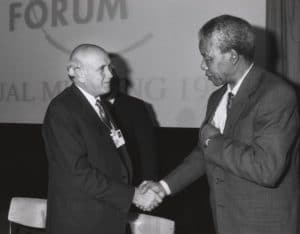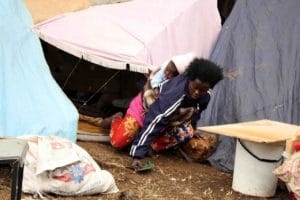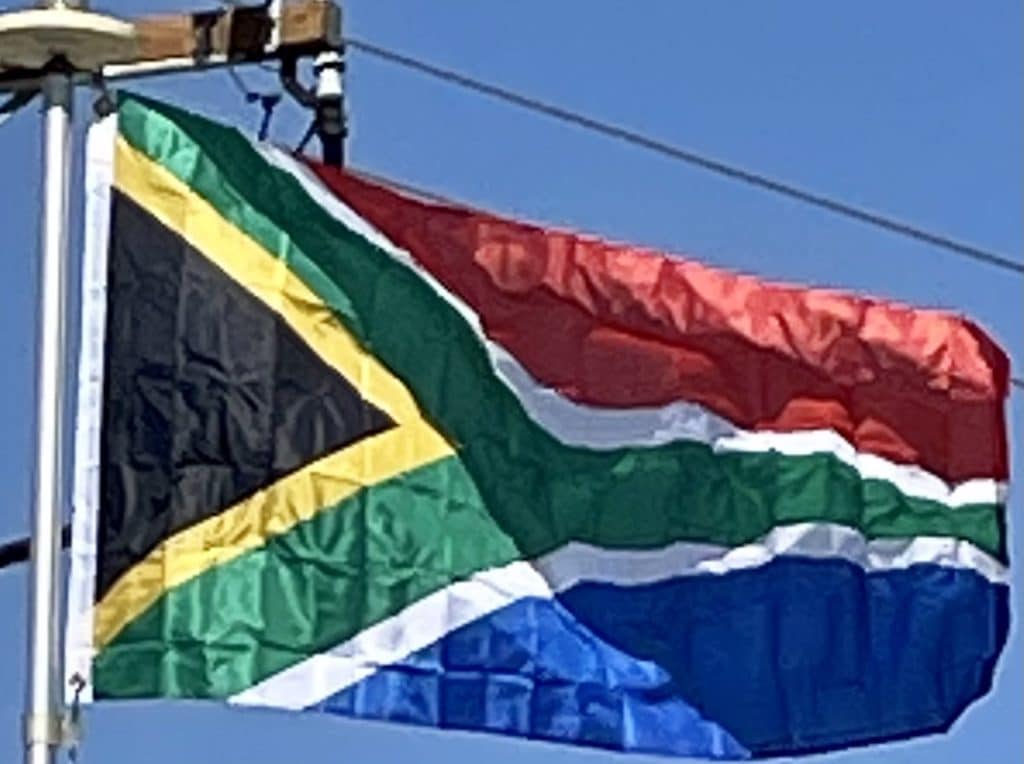
In 1990, the National Party government took the first step towards dismantling discrimination when it lifted the ban on the ANC and other political organizations. It released Nelson Mandela from prison after 27 years’ serving a sentence for sabotage. A negotiation process followed. With approval from the white electorate in a 1992 referendum, the government continued negotiations to end apartheid. South Africa also destroyed its nuclear arsenal and acceded to the Nuclear Non-Proliferation Treaty. South Africa held its first universal elections in 1994, which the ANC won by an overwhelming majority. It has been in power ever since. The country rejoined the Commonwealth of Nations and became a member of the Southern African Development Community (SADC).
In post-apartheid South Africa, unemployment remained high. While many blacks have risen to middle or upper classes, the overall unemployment rate of black people worsened between 1994 and 2003 by official metrics, but declined significantly using expanded definitions. Poverty among whites, which was previously rare, increased. In addition, the current government has struggled to achieve the monetary and fiscal discipline to ensure both redistribution of wealth and economic growth. The United Nations (UN) Human Development Index (HDI) of South Africa fell from 1995 to 2005, while it was steadily rising until the mid-1990s, before recovering its 1995 peak in 2013. This is in large part attributable to the South African HIV/AIDS pandemic which saw South African life expectancy fall from a high point of 62.25 years in 1992 to a low of 52.57 in 2005, and the failure of the government to take steps to address the pandemic in its early years.

In May 2008, riots left over 60 people dead. The Centre on Housing Rights and Evictions estimated that over 100,000 people were driven from their homes. The targets were mainly legal and illegal migrants, and refugees seeking asylum, but a third of the victims were South African citizens. In a 2006 survey, the South African Migration Project concluded that South Africans are more opposed to immigration than any other national group. The UN High Commissioner for Refugees in 2008 reported over 200,000 refugees applied for asylum in South Africa, almost four times as many as the year before. These people were mainly from Zimbabwe, though many also come from Burundi, Democratic Republic of the Congo, Rwanda, Eritrea, Ethiopia and Somalia. Competition over jobs, business opportunities, public services and housing has led to tension between refugees and host communities. While xenophobia in South Africa is still a problem, recent violence has not been as widespread as initially feared. Nevertheless, as South Africa continues to grapple with racial issues, one of the proposed solutions has been to pass legislation, such as the pending Hate Crimes and Hate Speech Bill, to uphold South Africa’s ban on racism and commitment to equality.
Geography:
South Africa is located at the southernmost region of Africa, with a long coastline that stretches more than 2,500 km (1,553 mi) and along two oceans (the South Atlantic and the Indian). At 1,219,912 km2 (471,011 sq mi), South Africa is the 24th-largest country in the world. It is about the same size as Colombia, twice the size of France, three times as big as Japan, four times the size of Italy and five times the size of the United Kingdom.
